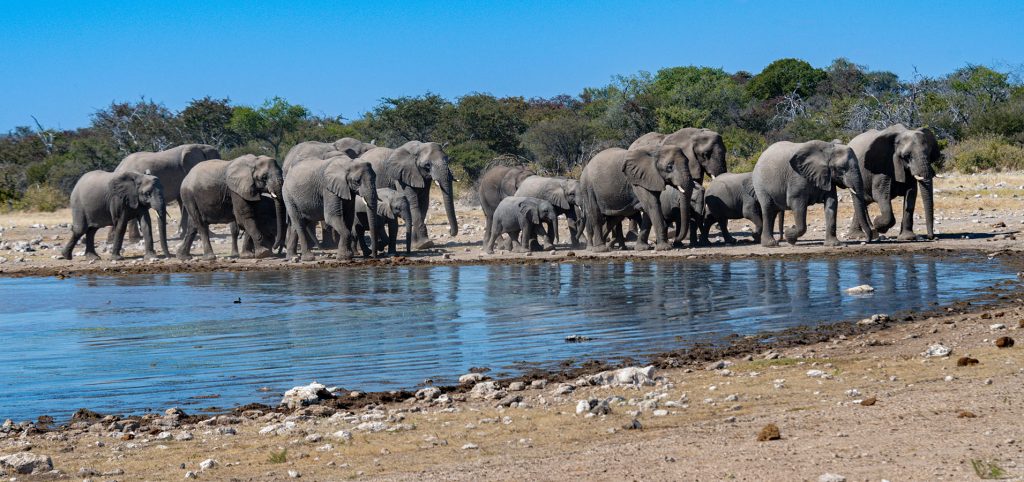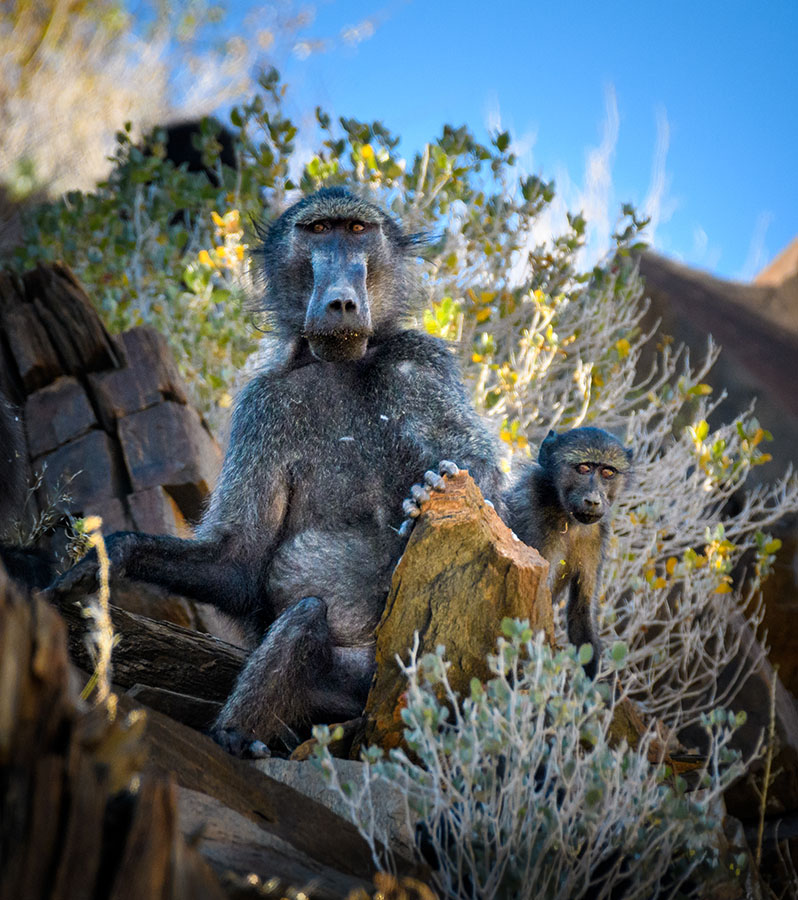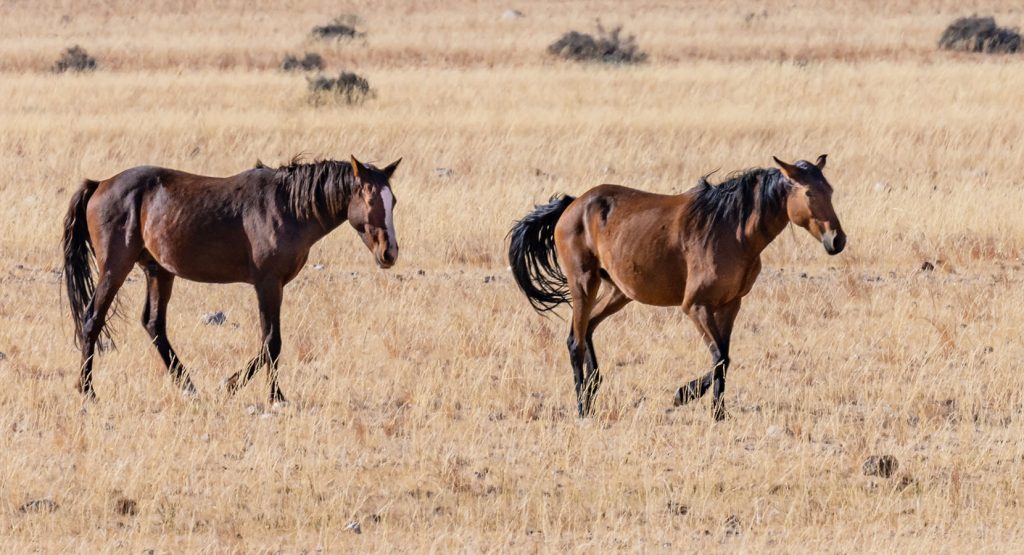All Photographs by Urvi Piramal
I had the pleasure of visiting Namibia for the second time in June this year. I was on a 4500-kilometre road trip with a group of friends.

Beautiful Namibia – A delight to my city-tired eyes.
Namibia is a fascinating and diverse country. It is a combination of beautiful landscapes, including the world’s oldest desert, that will make you feel like you are on another planet. The sparsely populated country is teeming with zebra, elephants, impala, spring bok, giraffes – a result of a 30-year-old environmental conservation programme. The people are friendly, simple and beautiful.
After a one-night halt to recoup from the long journey of Mumbai to Windhoek (pronounced as Win-took), the capital of Namibia, our road trip begins…
Wildlife is my passion so I was very happy that our first stop was Etosha National Park which is home to the most wildlife in the country. The name Etosha comes from Oshimdonga, a word meaning great white place, and it refers to the 120km-long geological basin, or hollow, heavy with salt deposits.
In the day, the sun scorches the land and animals hide in any shelter they find. Come sunset, when the pinkish orange rays of the sun descend, the animals gather at the water hole to quench their thirst. The temperature at night drops, a darkness follows suit, and suddenly the air is cool. The diurnal difference in a 24-hour period can be as high as 15 degrees centigrade, usually in July and August.
Animals and Birds of Namibia

Zebras at the Water Hole
 A Herd of Elephants
A Herd of Elephants

Ground Hornbill on a Tree

Crimson- Breasted Shrike

Ostrich on the Salt Pan

Thirsty Rhinos

Gangly Giraffes

Lioness Sisters

Cheetah Brothers on the Watch

These elephants use clay from the Etosha pans to protect themselves from the fierce Namibian sun.
After a couple of days, we leave Etosha and travel North to Opuwo. This place is a melting pot of people and cultures with the indigenous Himbas and Hereros walking side by side around town.
Though the Germans left a century ago, you can see the influence they had on the Herero people. The ladies still wear Victorian dresses while the men wear a hat and carry a cane.
We had the good fortune of visiting a Himba Village and interacting with the people. I marveled at their simple needs, their oneness with nature.

A Himba Family Home

Shy Young Himba Girls

Big Brother and Little One

Fascinating Hair-style of Himba Ladies

Four Generations Living Together
The Himba are an indigenous people with an estimated population of about 50,000, living in Northern Namibia. They worship their ancestors – their homes surround an Okuruwo (ancestral fire) – and the God Mukuru, whom they consider as their supreme creator. The Himba are known for their red matted braids, which are painstakingly made by mixing animal fat, ash and ground ochre, a locally found stone. They apply red ochre on their skin in lieu of a daily hot bath, in order to maintain good hygiene. The red mixture protects their skin from the harsh weather conditions, prevents body hair growth and keeps mosquitoes away.
After meeting with the Himbas it was time to hit the road again. We travelled through beautiful and shifting landscapes right to the heart of Damaraland. This region is typified by displays of colour, magnificent table-topped mountains and rock formations. Our guides informed us that this present day landscape has been formed by the erosion of wind, water and other geological forces which formed the rolling hills, dunes, gravel plains, and ancient river terraces. So much variety in so much isolation – it gave me a new understanding of the word wilderness.



Wild Wonderful Namibia


Baobab is also known as the ‘The Tree of Life’. Its leaves and fruits are used for food and medicinal purpose in Africa. It is also referred to as ‘the upside-down tree because it looks as though it has been planted with its roots sticking up. They grow to an enormous size and are known to live up to 3000 years.
On the way, we visit Twyfelfontein, a UNESCO Heritage site, which is famous for its mysterious rock engravings. These rock engravings (Petroglyphs) date back thousands of years. These are exceptional Bushmen engravings.


The day ended with a treat to the eyes – a magnificent sunset from our hotel in Palmwag.

Damaraland is home to a variety of desert adapted wildlife including the elusive desert adapted elephants. The following day saw us hunting for them on the dry river beds. The desert adapted elephants are physically the same as other elephants but have behaviorally adapted to the marginal conditions. They can survive with less food and less water.
Desert Adapted Animals of Damaraland

Desert Adapted Elephant

Herd of desert adapted elephants being led by the matriarch

Baboons Watching Us Lunch

Black-backed Jackal
From Damaraland we head off west towards the cold Atlantic coastline and the town of Swakopmund. On the way, we stop off at Cape Cross Seal Colony and the haunting remains of the Zeila shipwreck.
Renowned as one of the largest settlements of Cape fur seals, Cape Cross marks the spot where the first European explorer set foot on the coast of Namibia in 1486. This is now home to a thriving colony of more than 200,000 cape fur seals.


Thick fogs, strong winds, and treacherous shoals encountered off the coast, grounded many a ship. Over the years, many ships came to grief and the coast was lined with thousands of shipwrecks which is why it got its name Skeleton Coast.


Strong land wind blows surf backward

Zeila – A fishing vessel that ran aground in 2008, is now home to thousands of cormorants and other sea birds.
Next morning is spent with the flamingoes in the harbour town of Walvis Bay. 

Frolicking Flamingoes
Early in the afternoon, we embark on an excursion to discover the beautiful Sandwich Harbour area – a narrow stretch of beach between the sand dunes on one side and the sea on the other. Some of these dunes have a 30-degree gradient.

At the top, we stop under a hot sun and blue sky. As far as the eye can see, there are vast plains, sharp curves, crescent moons – all formed in eternal sand.


Being at the top of the mountain was tonic for my eyes and a symphony for my soul. We stopped the car. I took off my shoes – wanting to feel the sand slip through my toes and fingers. I wanted the sun’s heat on my cheek, the wind through my hair and the salt on my lips – a feeling of complete freedom. That day was tiring but truly exhilarating.
Leaving Swakopmund we continued our journey driving Southeast. Travelling through the ever-changing desert landscape and canyons we come to a quaint little place called Solitaire. In Solitaire, we find old broken down cars scattered everywhere and get busy photographing ourselves in them.


We have a picnic lunch under the shade of a tree and we are off to Namib Naukluft National Park – The Namib desert and Sossusvlei (pronounced as Sossus-fly) – a desert which dates back some 15 million years. The Namib is a desert on top of a desert, with petrified dunes buried beneath the active sands. It is widely held to be the oldest desert on earth.
Sossusvlei was stunning. This area is a clay pan set amid monstrous piles of sand known as star dunes that reach a height of a 60-storey skyscraper and rank among the tallest dunes on earth.


Sand being blown by the strong winds of the desert.


Stunning red sand dunes of Sossusvlei
Another such pan is Deadvlei (pronounced as Dead-fly) where big camel-thorn trees, dead for want of water, still stand erect. They grew here until about 900 years ago when the sand sea finally blocked the occasional floods.

Deadvlei
After quenching our thirst with the grandeur of Sossusvlei, we take the road heading south west to the coast and the town of Luderitz.
Here we visit the ghost town of Kolmanskop. This was the place where diamonds were first mined in Namibia. The town flourished till 1943 when the mine was shut down and the town was abandoned to the elements.
We leave the coast and Luderitz behind, making our way east to Keetmanshoop and the Quiver Tree Forest. We spot wild horses on the way and are regaled with the story of how Namibia got wild horses.

Wild Horses of Namibia
According to the story, when the Germans left Namibia after the first world war, they set free all the horses they owned. Over the century these domesticated horses ran wild and became the present wild horses of Namibia.
Quiver trees were so called because in the 17th Century the San hunter–gatherers were seen making Quivers for their arrows from the hollow branches. These trees are very beautiful.
Quiver Trees

From Quiver tree back to Windhoek and the end of a fabulous and fascinating trip.

Looking back, there was so much to be grateful for. But what stayed with me longest were the sand dunes. They say from one instant to the next, sand dunes are never the same. The wind is constantly blowing them, this way and that, causing particles of sand to move slowly but surely so that the mountains are recreated one speck at a time. We are not so different. Every second in time changes us, offers us a choice, and molds us. Nature is divinity for the soul. Being in nature makes me see things from a simpler perspective and helps me appreciate beauty in every small thing I see and experience. I feel truly blessed…….







